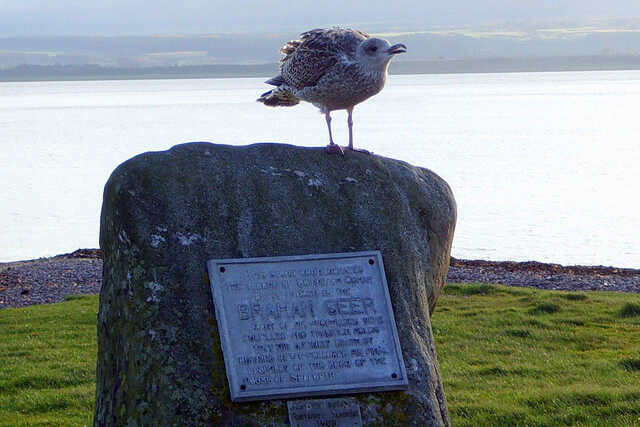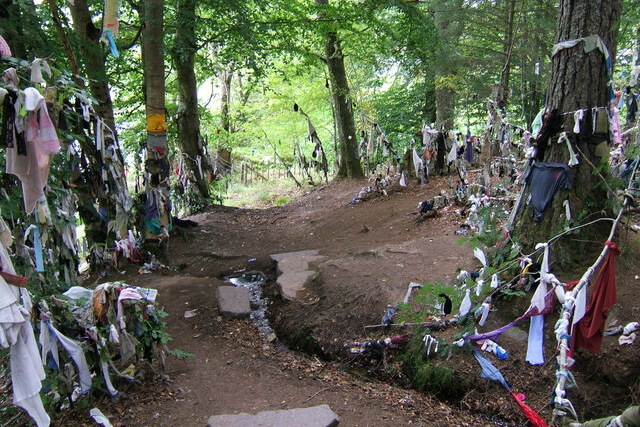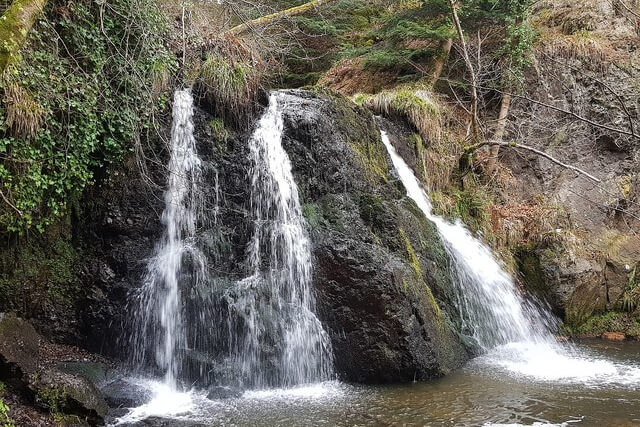The Best Places for UK Short Breaks in 2025
If you've been wondering where the best place to for a weekend break in the UK is, then you're...

A sought-after penisula in the Scottish Highlands, the Black Isle is famous for many things, among them beaches, dolphins, fine dining and classic architecture.
The villages on The Black Isle are a magnet for holidaymakers, but few visitors know the extent of it’s hidden history.
Over the course of hundreds of years soothsayers, witches, healers and mystics have gravitated here. If you look closely enough, you can still see where they have left their mark.
We’ve put together a guide that takes a brief look at The Black Isle’s unique history and explains the myths, legends and supersitions of the area. Keep reading to find out more…

One of the most well-known personalities in The Black Isle history is The Brahan Seer, who lived here in the 17th century. A self-styled mystic, prophet and psychic, Seer is held in high esteem due to the accuracy of many of his prophecies.
It is believed the The Brahan Seer, known locally as Coinneach Odhar, was gifted with the sight to see visions.
The Eagle Stone stands in Strathpeffer. The Seer said that if it fell down three times, then Loch Ussie would flood the valley below. The stone has fallen down twice, and since then, locals have set the stone in concrete to avoid a third.
Throughout the 17th century, The Seer poked fun at the gentry and predicted the demise of the ruling elites, which were eventually proven correct. Because of this, The Seer was burnt in a tar barrel at Chanonry point. A plaque marks the exact spot.
The village of Cromarty is situated on the most easterly tip of The Black Isle, at the entrance to the firth. It is protected from the sea by the South Sutor. From here you can look across the water to Nigg and North Sutor.
The name Cromarty comes from an old Scottish word for shoemaker. According to The Black Isle legend, two giant shoemakers lived on these headlands and would share their tools by throwing them to each other across the firth.
Nowadays you can take a ferry across the firth. It’s a fantastic way to see the coastline and maybe spot some dolphins.

The Black isle is home to two clootie wells, one located at Craigie near Avoch and the other at Munlochy. The latter was made famous after featuring in one of Ian Rankin’s bestselling Rebus novels. Legend has it that locals would gather to drink the water before sunrise on the first Sunday in May.
The tradition of these wells stretch as far back as pre-Christian times. The ritual associated with them involves tying a piece of cloth that has been in contact with a sick person to a nearby tree.
As the cloth rotted then so would the sick person be cured. Just remember, modern synthetics are not bio degradable so you would be wasting your time trying to cure your illness with a piece of nylon.
Avoch is a traditional fishing village on the south of the Black Isle. The fishermen here would leave their boats out in the shallows so as to avoid the rocky waters close to the shoreline.
This meant they had to start and end their days by wading to and from their boats. Then started the custom of the fishermans wives carrying their men to the boats in the morning and meeting them upon their return back home to carry them back.
In order to make this chore easier on all, men would look for large strong women to marry and the women would look for small men to court. Since the construction of a small pier in Avoch, this unique tradition has sadly been consigned to history.

On the outskirts of Rosemarkie, The Fairy Glen was once a popular destination for well-dressing ceremonies. Local children would decorate the springs with flowers in the hope that the fairies would keep the water clean.
Nowadays, The Fairy Glen is a popular walking trail, rewarding visitors with awe-inspiring views of two cascasing waterfalls. A money tree sits nearby, where hundreds of old coins have been hammered into it as offerings.
Michael Scott, also known “The Wizard of the North” was a 13th century scientist, astronomer, alchemist, sorcerer and tutor to the Pope. He was later immortalised in Dante’s inferno and Sir Walter Scott’s Lay of the Last Minstrel.
Legend has it that the curious geography of the Moray Firth, where Chanonry point and Fort George seem to reach out in an embrace is thought to have created as a result of The Wizard of the North mobilising an army of fairies.
He constructed the Cathedral of Elgin and the Chanonry Kirk of Fortrose before reazling that they were each in the wrong location.
Construction began on a bridge so that they could be swapped, however, interrupted in their work by a man of god in the middle of the night, the job was never complete.
Fancy experiencing the mystery behind The Black Isle for yourself? Position yourself close to the action with a stay in one of these cottages in Scotland.
And why not uncover more facinating tales by reading our guide on where to see the Northern Lights in Scotland.
Images courtesy of: Julian Paren – (CC BY-SA 2.0 DEED); Sylvia Duckworth – (CC BY-SA 2.0 DEED); F Leask – (CC BY-SA 2.0 DEED); Rob Farrow – (CC BY-SA 2.0 DEED);
Are you on the phone to our call centre? Your Customer ID is:
Get involved in the Discussion